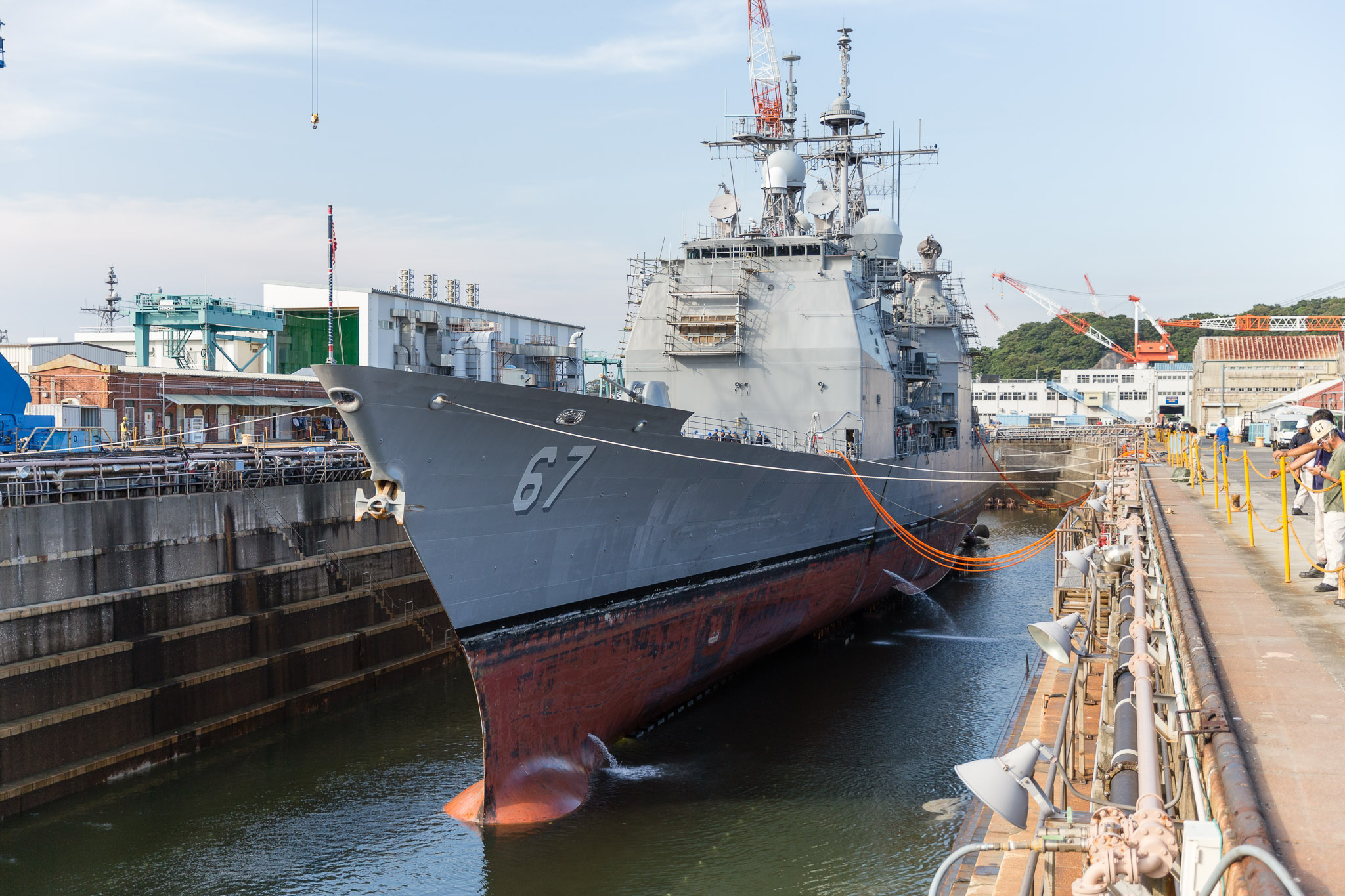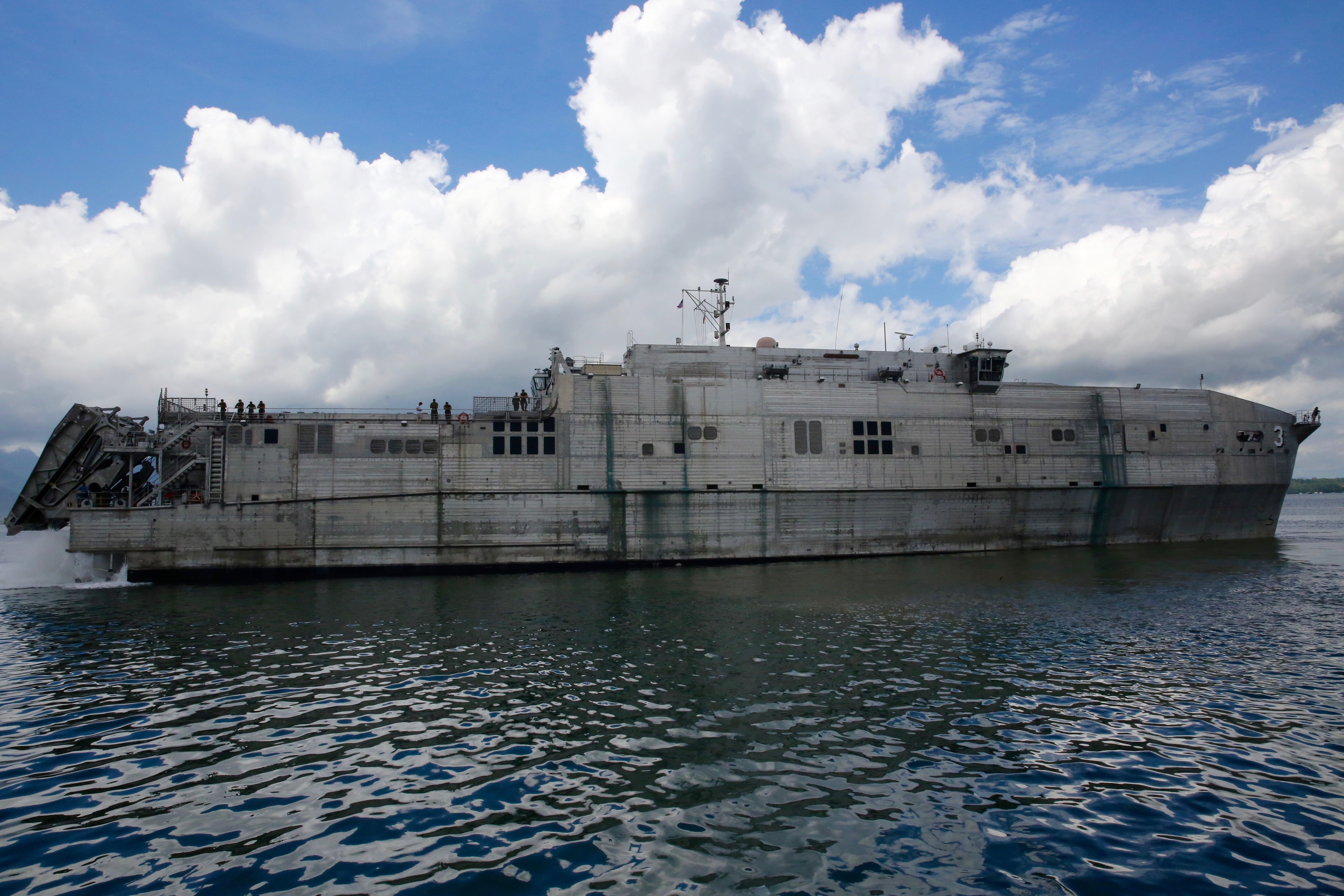
KUALA LUMPUR, Malaysia –The U.S. Navy’s Commander of Logistics Group Western Pacific/Task Force 73 is in the process of expanding its maintenance and support capabilities, its commander told USNI News.
COMLOG WESTPAC works with about 24 shipyards in a dozen countries, “all the way from Guam to India to Southern Japan,” and the organization is looking to expand that list with new relationships, Rear Adm. Donald D. Gabrielson said Oct. 5 in Kuala Lumpur at the Maritime Warfare Asia Conference. He said his command is looking at new locations, what capabilities they could bring the Navy and how the Navy could help grow the facilities to support their needs in the Pacific.
Gabrielson said having a network of places in the region where U.S. Navy ships can conduct any maintenance or repairs – instead of returning to their home port – would lead to massive cost savings, though he added that any facility or company conducting such work would have to meet the Navy’s standards for such work on its ships.

This happened recently with guided-missile cruiser USS Shiloh (CG-67), which on Sept. 9 completed a two-week continuous maintenance availability (CMAV) period in Sembawang, Singapore, where Shiloh‘s crew and shipyard personnel completed more than 90 maintenance jobs on the ship.
Gabrielson said his organization is also developing an Expeditionary Maintenance Capabilities concept, which deals with the provision of maintenance capabilities to ships operating at sea or docked in an area where no support capabilities exist.
“We have two things we are working on: taking a containerized capability, putting it on a platform and taking it to a ship, and the other is taking an existing heavy maintenance capability and bringing it to the ship,” he said.
The first option involves the use of an Expeditionary Fast Transport ship, namely the USNS Millinocket (T-EPF-3), which is currently operating in the region. Due to its modular nature, the command is assessing the viability of loading the ship with container modules capable of allowing it to provide maintenance, repair and support capabilities.
“The beautiful thing about the Expeditionary Fast Transport is that its space, you can put anything in it … so one of the things we’re working on is whether it makes sense and how we how we would test and do this modular maintenance capability,” he said.
Gabrielson said he would ideally like to test this concept on the Littoral Combat Ships operating in the region.
Scheduling challenges have forced this test to the right, but “we’re going to do it, we going to find out what we can do in terms of the capability, what makes sense and can be accomplished,” he said.

Gabrielson said it was still undetermined whether USS Coronado (LCS-4) would be the ship used in the evaluation. If successful, using the USNS Millinocket to provide expeditionary maintenance support would not be restricted to just LCSs.
“The point is to be able to take what you need and bring it to where you need it, so you don’t want to say you can solve only one problem but instead you want to solve many problems,” he said. The second maintenance support option deals with the use of existing dedicated maintenance and support assets on other non-dedicated tasks.
“We’re re-energizing capabilities that we had for years, that we had stepped away from,” he said. For example, he noted that a week ago a submarine tender reloaded a guided-missile destroyer’s vertical launch missiles at sea.
With COMLOG WESTPAC also being the executive coordinator for the Navy’s exercises in the region with partner militaries, Gabrielson also talked about evolving the Navy’s annual Cooperation Afloat Readiness and Training (CARAT) from its current bilateral exercise format to multilateral exercises in the next five years. Those efforts are beginning with this year’s CARAT Malaysia incorporating a joint phase in the Sulu Sea with the Malaysian, U.S. and Philippine navies.
Next year’s CARAT engagements are still being planned, and therefore he couldn’t say for sure that they would include multilateral phases. At the same time, existing multilateral exercises such as Pacific Partnership and Southeast Asia Cooperation and Training (SEACAT) are expanding in scope and participation. Despite the push towards multilateral engagements, Gabrielson said bilateral work will always be important in building trust between the U.S. and partners.





